Quantification and Pictorial Expression of Driving Status Domain Boundaries for Autonomous Vehicles in LTAP/OD Scenarios
Abstract
1. Introduction
1.1. Background
1.2. Related Work
1.3. Contributions
- The experimental vehicle in this study is set up as closely as feasible to the standard autonomous vehicle configuration, and real-world LTAP/OD scenarios are chosen for actual vehicle testing. The subjective passenger comfort evaluation results and objective vehicle motion state data collected during the experiment are statistically organized, analyzed, and expressed as pictorials. Based on the vehicle motion state parameters, the boundaries of the comfort and extreme status domains are visually determined.
- The kinematic analysis model of the unprotected left turn of the vehicle is established. In conjunction with the risk perception and operation model of a skilled driver, the Safe Collision Plots (SCP) of conflicting vehicles with different combinations of velocity and relative distance in LTAP/OD scenarios are quantified, and the safety status domain boundary of the vehicle is visually determined.
- By combining actual vehicle motion parameters and passenger experience, we segment the driving status domains and provide a pictorial quantification method which may provide a theoretical and data foundation for improving the performance of ADAS and autonomous vehicles.
2. Definition of Each Status Domain and Its Boundary
3. Experimental Setup
3.1. Experimental Equipment
- (1)
- Experimental vehicle
- (2)
- Equipment for collecting vehicle motion state parameters
3.2. Experimental Participants
- (1)
- The driver
- (2)
- The test passengers
- (3)
- The data recorder
3.3. Experimental Route
4. Determination and Quantification of Boundary Metrics for Each Status Domain
4.1. Determination and Quantification of Comfort Status Domain Boundary
4.2. Determination and Quantification of Extreme Status Domain Boundary
4.3. Determination and Quantification of Safety Status Domain Boundary
5. Discussion
6. Conclusions and Outlook
Author Contributions
Funding
Data Availability Statement
Conflicts of Interest
References
- Campbell, J.L.; Richard, C.M.; Brown, J.L.; McCallum, M. Crash Warning System Interfaces: Human Factors Insights and Lessons Learned; Technical Report DOT HS 810 697; NHTSA: Washington, DC, USA, 2007. [Google Scholar]
- McCall, J.C.; Trivedi, M.M. Driver behavior and situation aware brake assistance for intelligent vehicles. Proc. IEEE 2007, 95, 374–387. [Google Scholar] [CrossRef]
- Sullivan, J.; Tsimhoni, O.; Bogard, S. Warning Reliability and Driving Performance in Naturalistic Driving; University of Michigan Transportation Research Institute: Ann Arbor, MI, USA, 2007. [Google Scholar]
- Hancock, P.A.; Billings, D.R.; Schaefer, K.E.; Chen, J.Y.; De Visser, E.J.; Parasuraman, R. A meta-analysis of factors affecting trust in human-robot interaction. Hum. Factors 2011, 53, 517–527. [Google Scholar] [CrossRef] [PubMed]
- Nodine, E.; Lam, A.; Stevens, S.; Razo, M.; Najm, W. Integrated Vehicle-Based Safety Systems (IVBSS) Light Vehicle Field Operational Test Independent Evaluation; National Highway Traffic Safety Administration: Washington, DC, USA, 2011. [Google Scholar]
- Nodine, E.; Stevens, S.; Lam, A.; Jackson, C.; Najm, W.G. Independent Evaluation of Light-Vehicle Safety Applications Based on Vehicle-to-Vehicle Communications Used in the 2012–2013 Safety Pilot Model Deployment; National Highway Traffic Safety Administration: Washington, DC, USA, 2015. [Google Scholar]
- Yan, X.; Zhang, Y.; Ma, L. The influence of in-vehicle speech warning timing on drivers’ collision avoidance performance at signalized intersections. Transp. Res. Part C Emerg. Technol. 2015, 51, 231–242. [Google Scholar] [CrossRef]
- Hafner, M.R.; Cunningham, D.; Caminiti, L.; Del Vecchio, D. Cooperative collision avoidance at intersections: Algorithms and experiments. IEEE Trans. Intell. Transp. Syst. 2013, 14, 1162–1175. [Google Scholar] [CrossRef]
- Lytrivis, P.; Thomaidis, G.; Tsogas, M.; Amditis, A. An advanced cooperative path prediction algorithm for safety applications in vehicular networks. IEEE Trans. Intell. Transp. Syst. 2011, 12, 669–679. [Google Scholar] [CrossRef]
- Boran, C.; Bostrom, O.; Jacobson, B.J.; Lie, A.; Sander, U. Saving Lives with V2X versus On-Board Sensing Systems-Which will be More Effective?: Technology Leadership Brief. In Proceedings of the SAE Convergence 2012, Detroit, MI, USA, 16–17 October 2012. [Google Scholar]
- Summala, H. Towards understanding motivational and emotional factors in driver behaviour: Comfort through satisficing. In Modelling Driver Behaviour in Automotive Environments: Critical Issues in Driver Interactions with Intelligent Transport Systems; Springer Publishing: New York, NY, USA, 2007; pp. 189–207. [Google Scholar]
- Vaa, T. Drivers’ information processing, decision-making and the role of emotions: Predictions of the Risk Monitor Model. In Human Modelling in Assisted Transportation: Models, Tools and Risk Methods; Springer Publishing: New York, NY, USA, 2011; pp. 23–32. [Google Scholar]
- Bärgman, J.; Smith, K.; Werneke, J. Quantifying drivers’ comfort-zone and dread-zone boundaries in left turn across path/opposite direction (LTAP/OD) scenarios. Transp. Res. Part F Traffic Psychol. Behav. 2015, 35, 170–184. [Google Scholar] [CrossRef]
- Junghans, M.; Krauns, F.; Sonka, A.; Böhm, M.; Dotzauer, M. Comparison of safety and kinematic patterns of automated vehicles turning left in interaction with oncoming manually driven vehicles. Trans. Transp. Sci. 2021, 2, 1–12. [Google Scholar] [CrossRef]
- Meng, L.; Wang, Y. Tool Development and Quantitative Analysis for Naturalistic Left Turn Across Path/Opposite Direction (LTAP/OD) Driving Scenarios. Master’s Thesis, Chalmers University of Technology, Göteborg, Sweden, 2016. [Google Scholar]
- UNECE. Proposal for the 01 Series of Amendments to UN Regulation No. 157 (Automated Lane Keeping Systems); UNECE: Geneva, Switzerland, 2022; p. 100. [Google Scholar]
- SAE International. Taxonomy and Definitions for Terms Related to Driving Automation Systems for On-Road Motor Vehicles J3016_202104. Available online: https://www.sae.org/standards/content/j3016_202104/ (accessed on 16 May 2023).
- Qin, Y.; Xue, Y.; Xing, Z.-Y.; Wang, Y.-H. Study on Ride Comfort Indices Correlation Analysis Based on BP Neural Network. In ICTIS 2011: Multimodal Approach to Sustained Transportation System Development: Information, Technology, Implementation; American Society of Civil Engineers: Reston, VA, USA, 2011; pp. 2283–2289. [Google Scholar]
- Tesla. Safety Score Beta. Available online: https://www.tesla.com/support/safety-score#version-2.0 (accessed on 10 May 2023).
- Nobukawa, K. A Model Based Approach to the Analysis of Intersection Conflicts and Collision Avoidance Systems; University of Michigan: Ann Arbor, MI, USA, 2011. [Google Scholar]
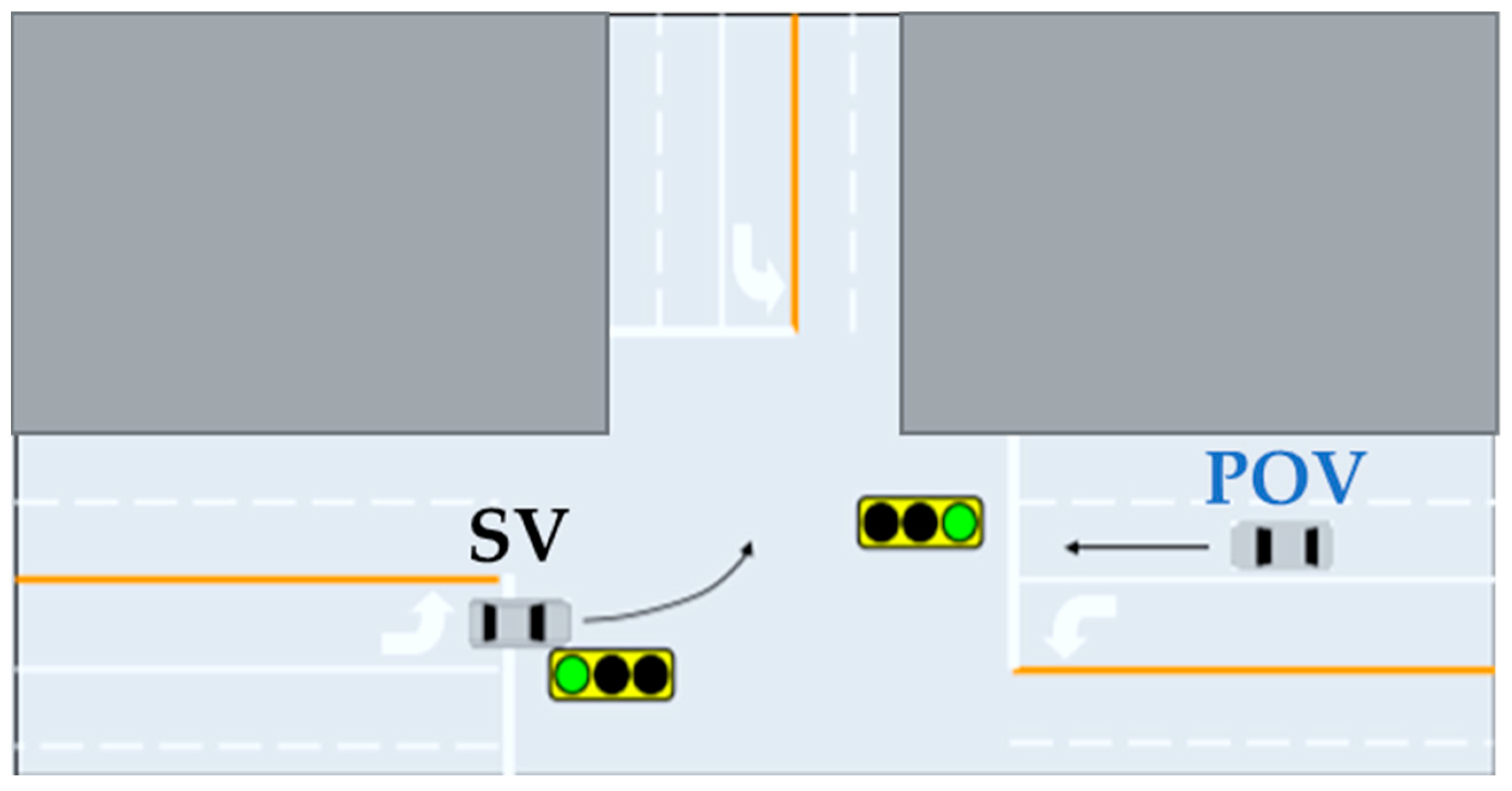
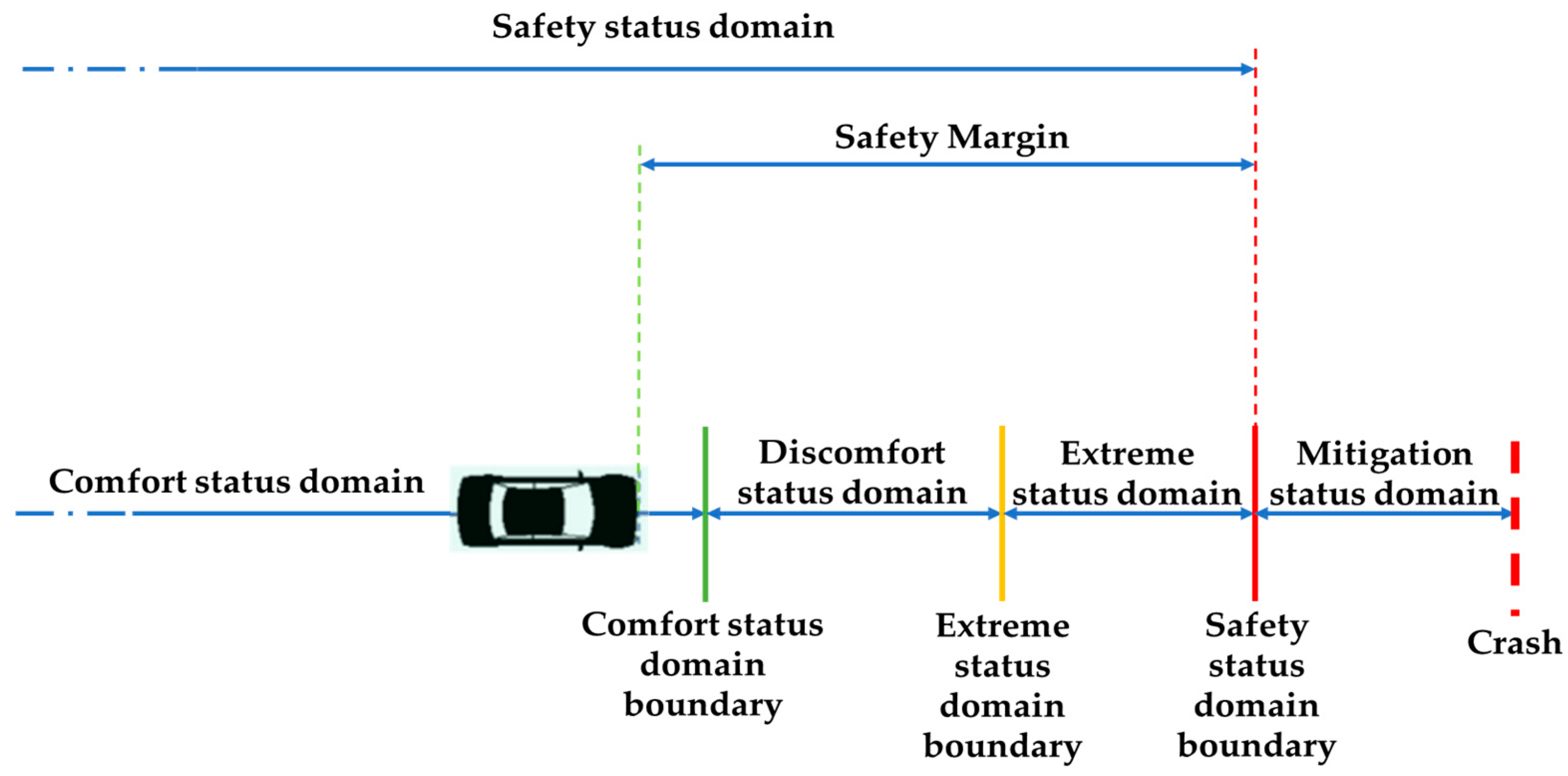
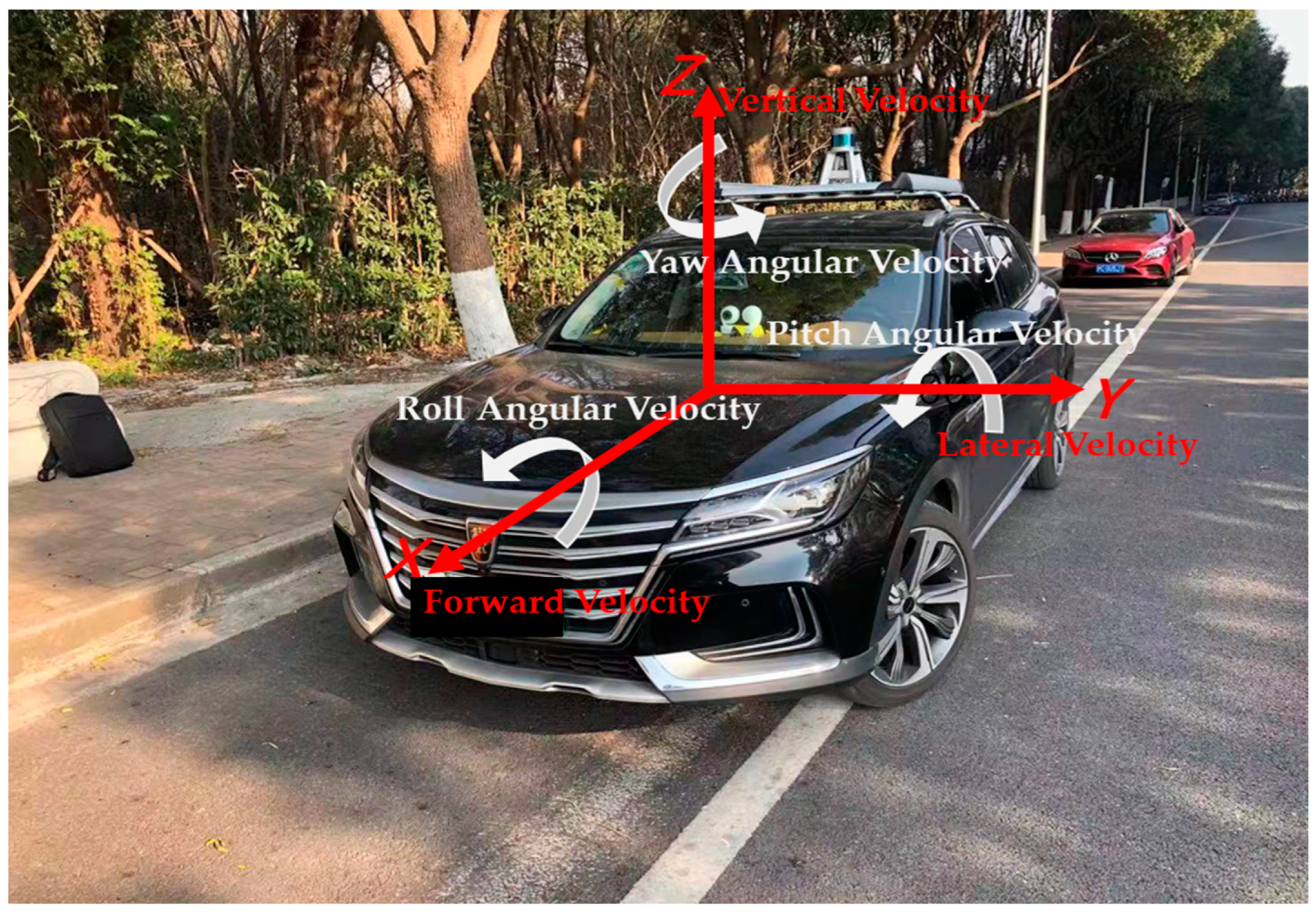
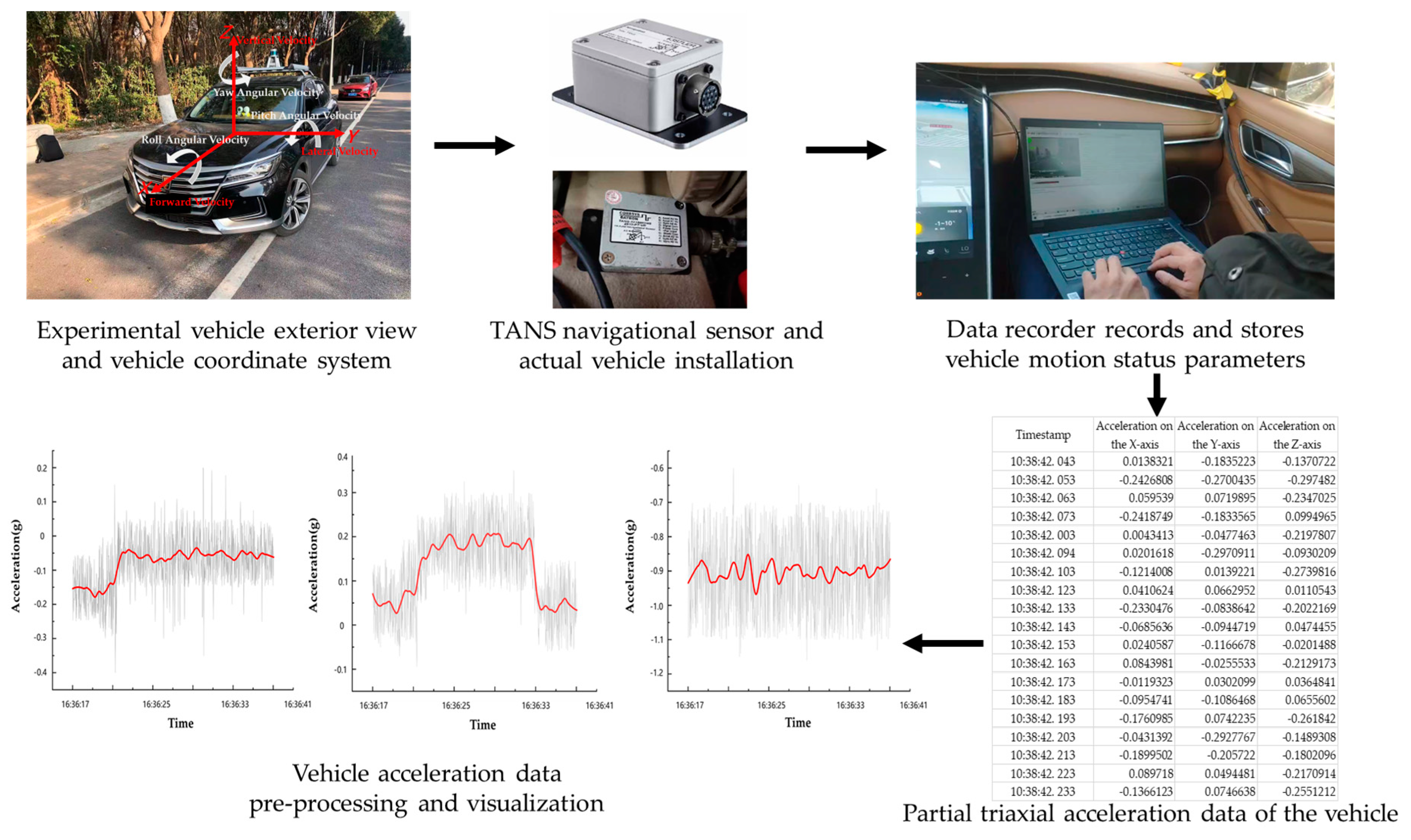
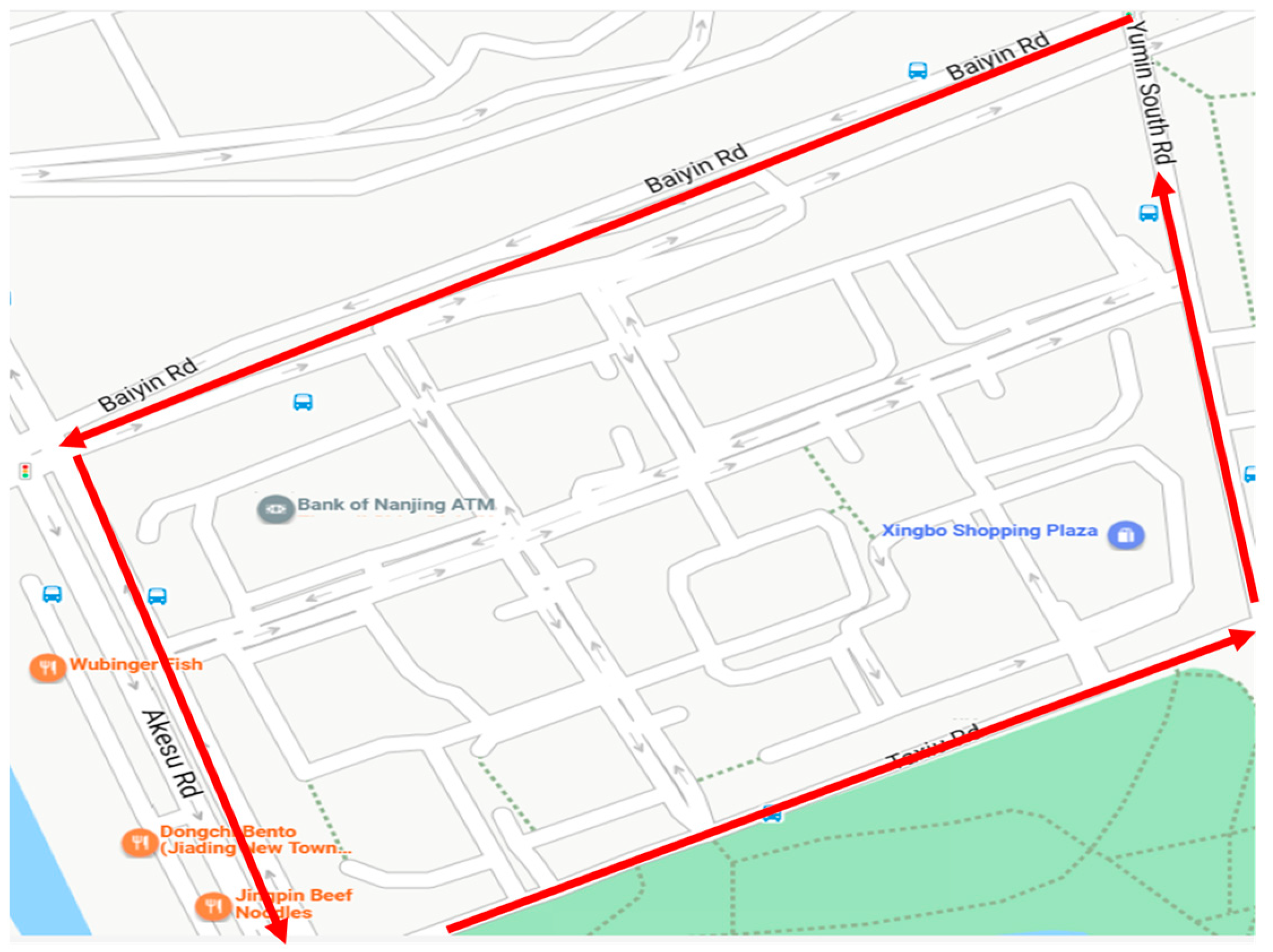
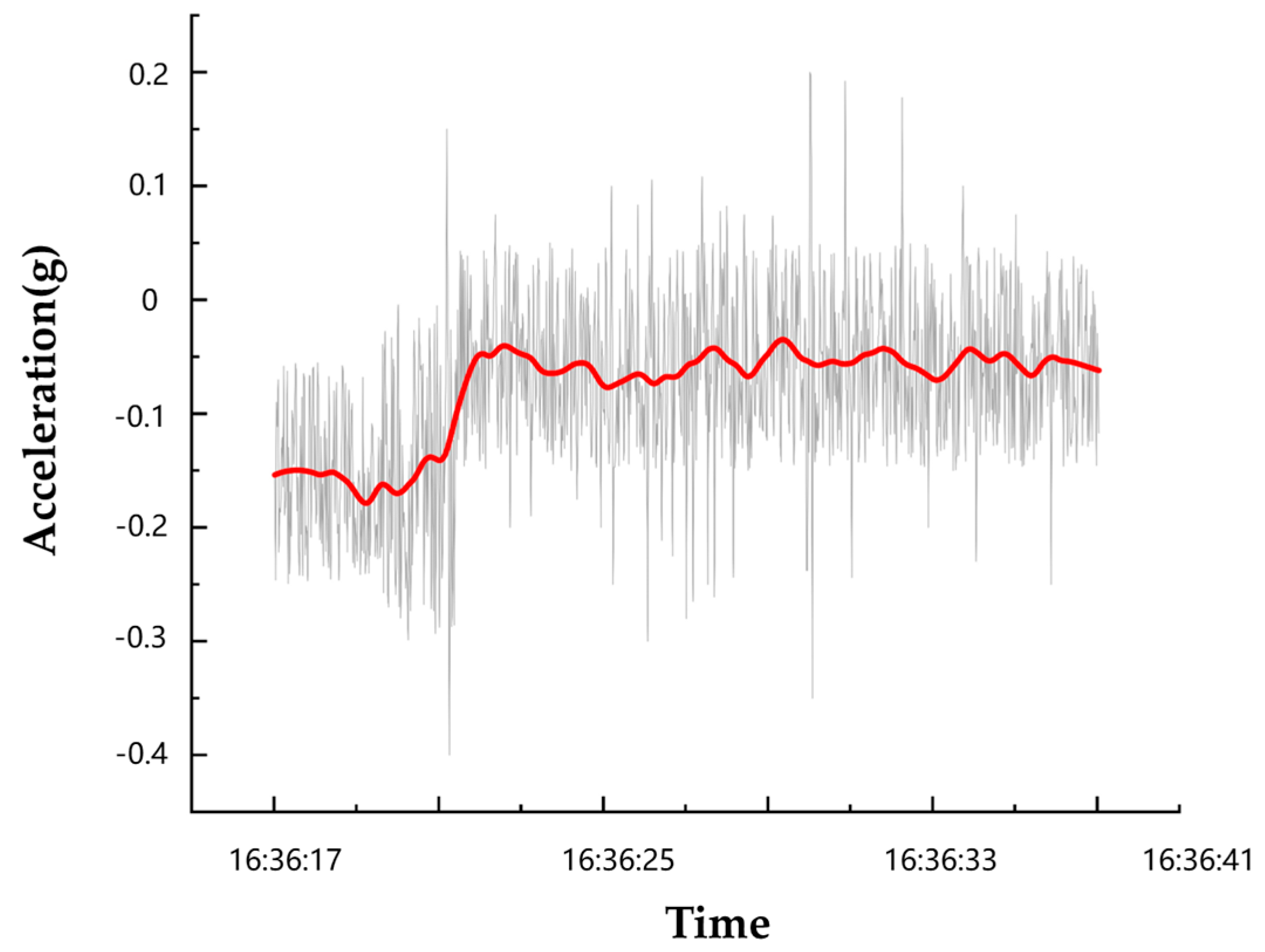
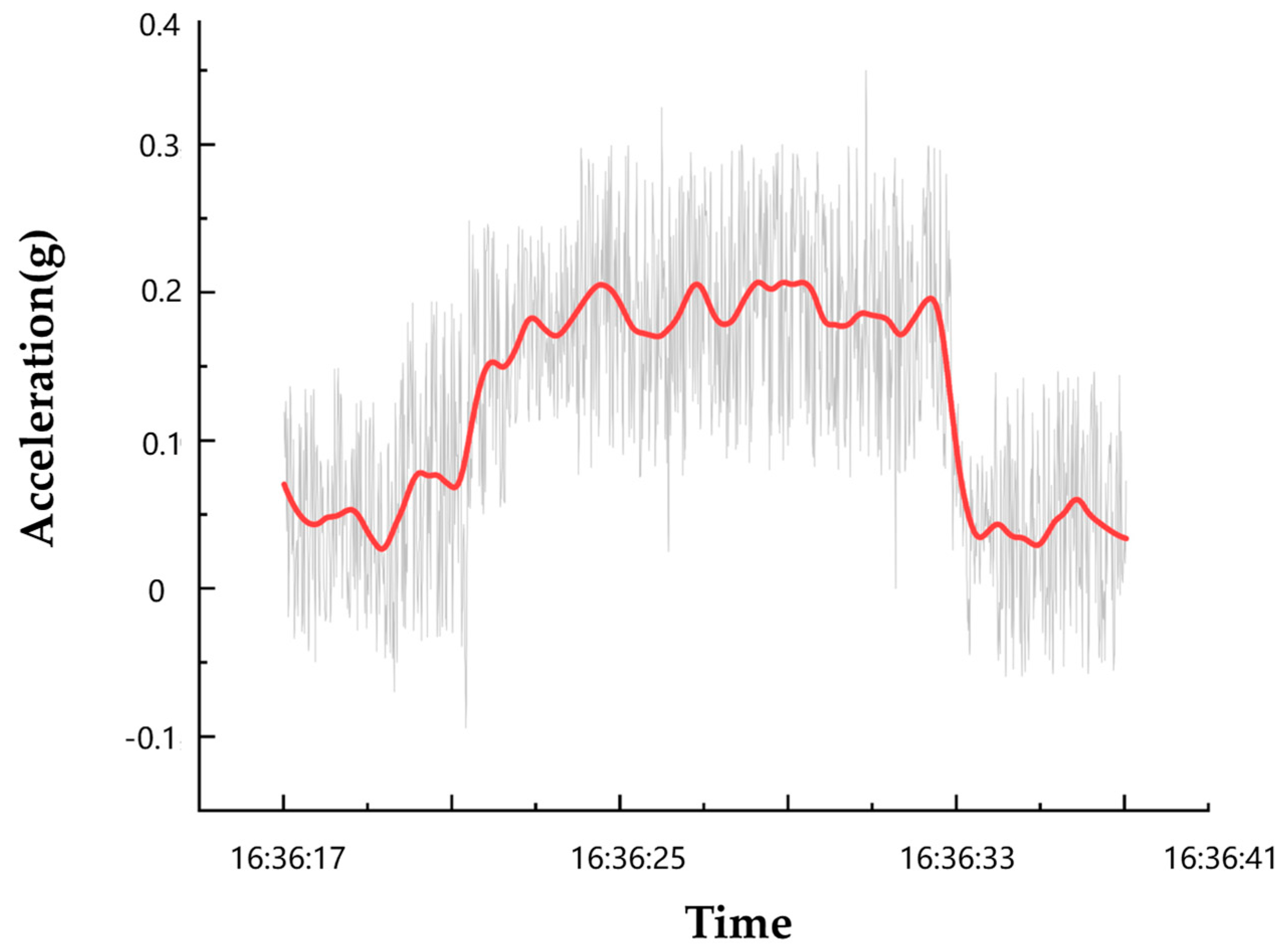
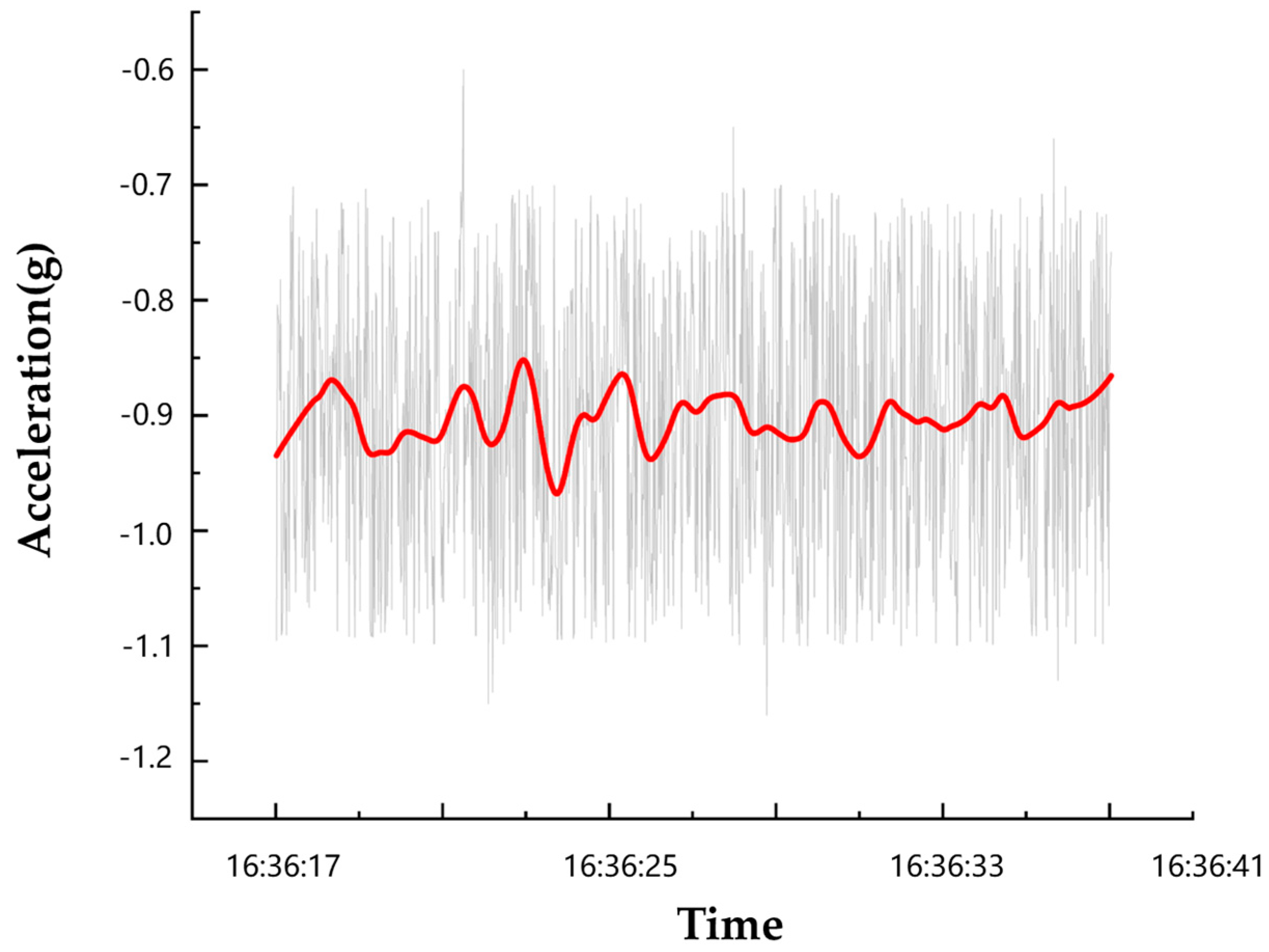


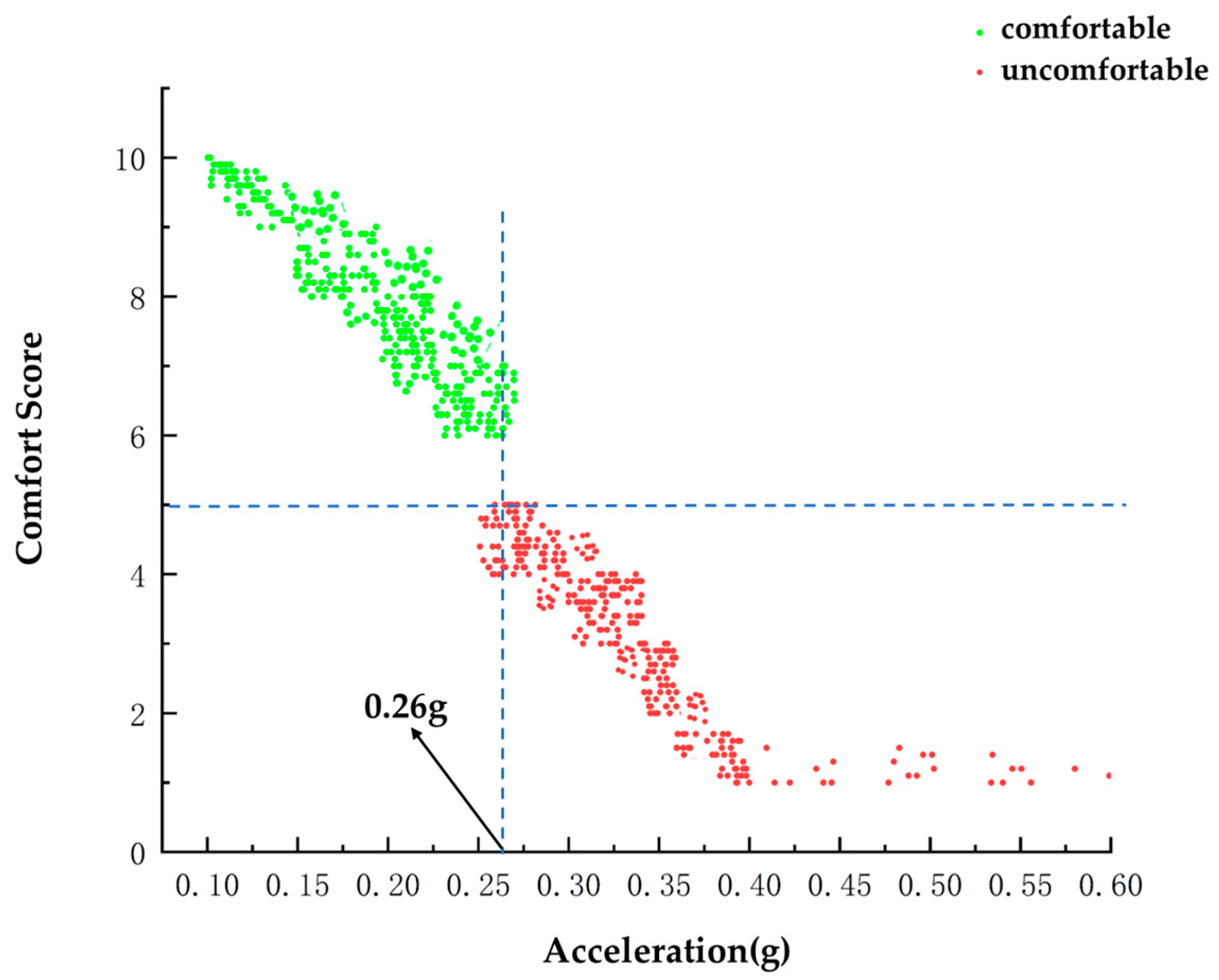
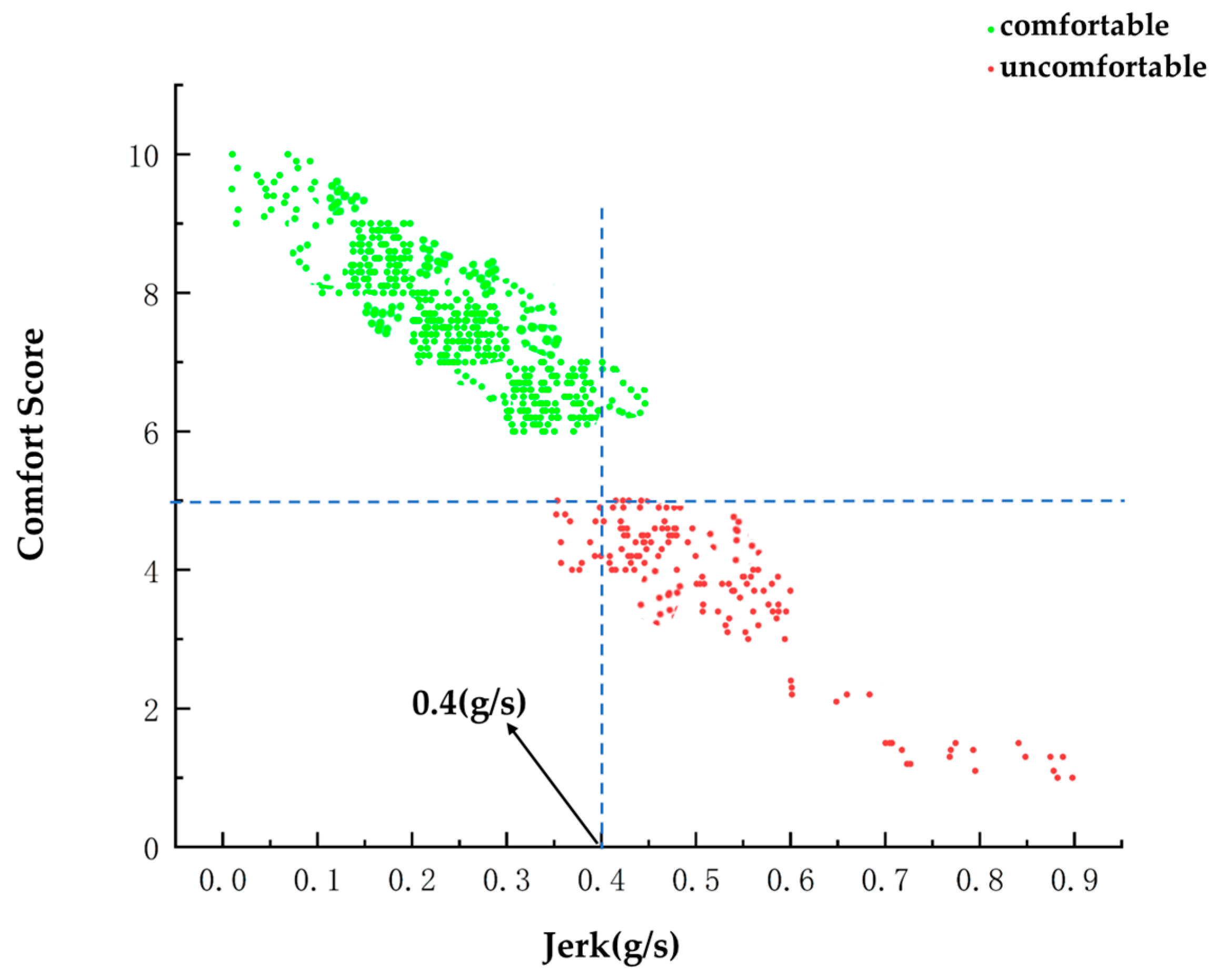
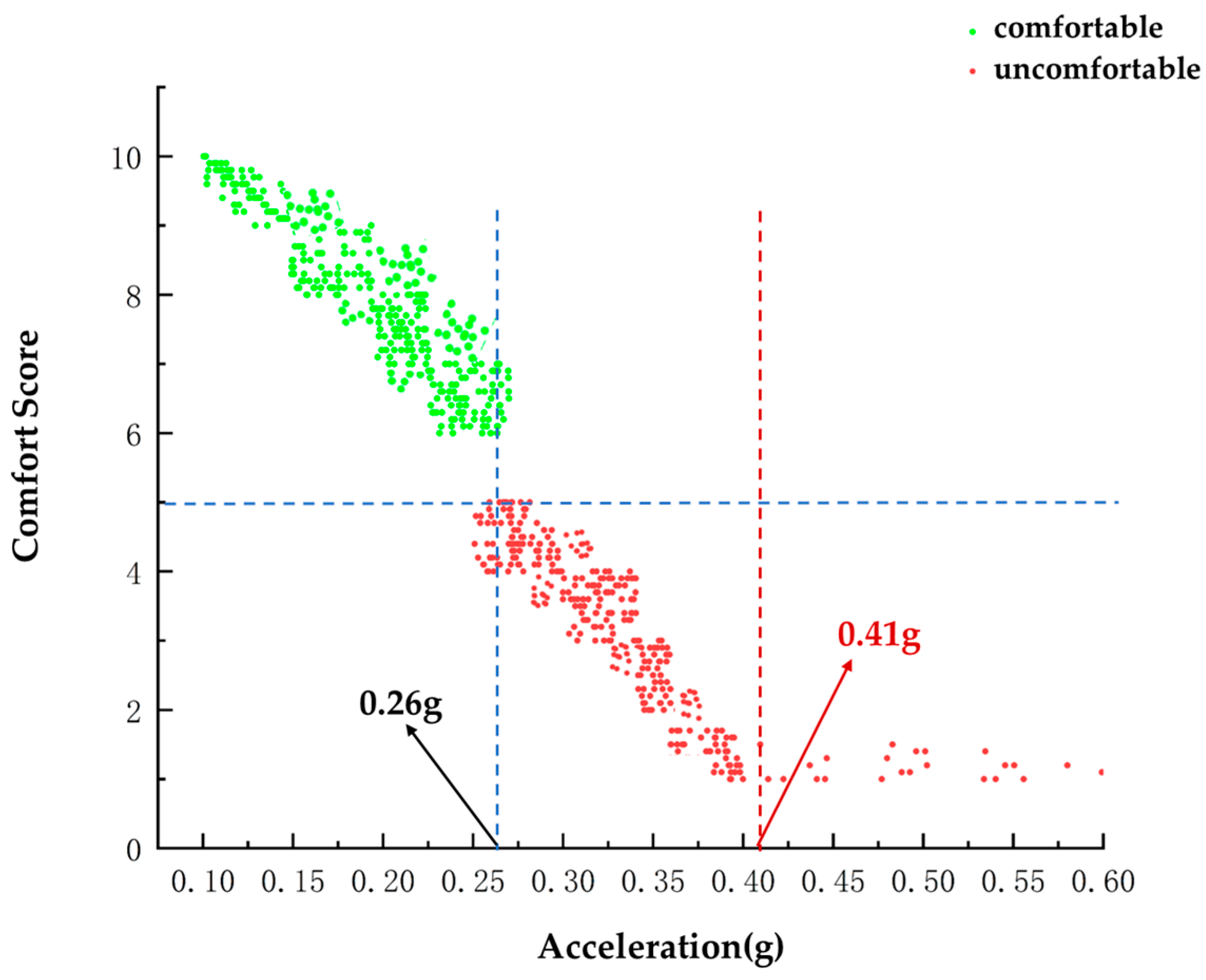
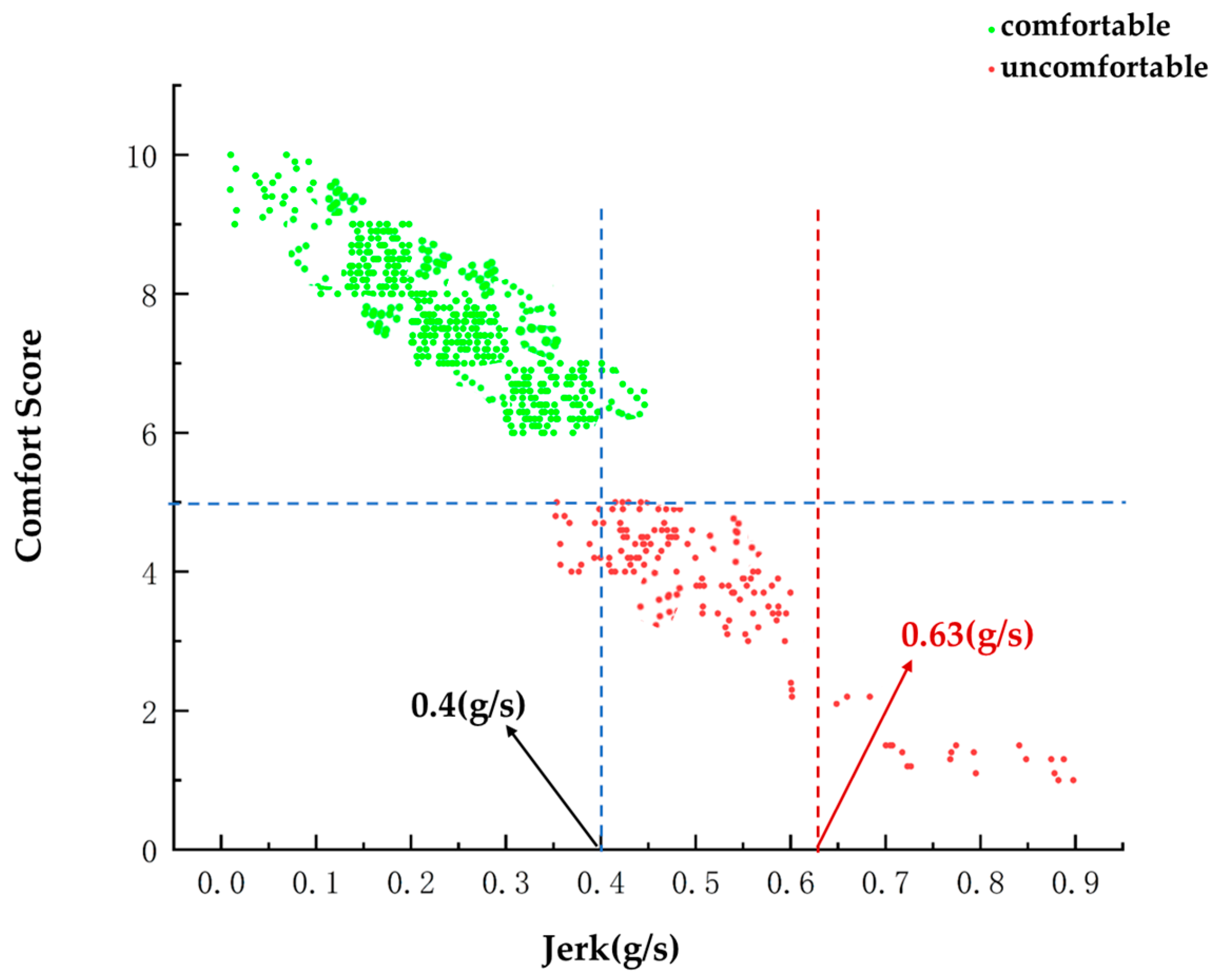
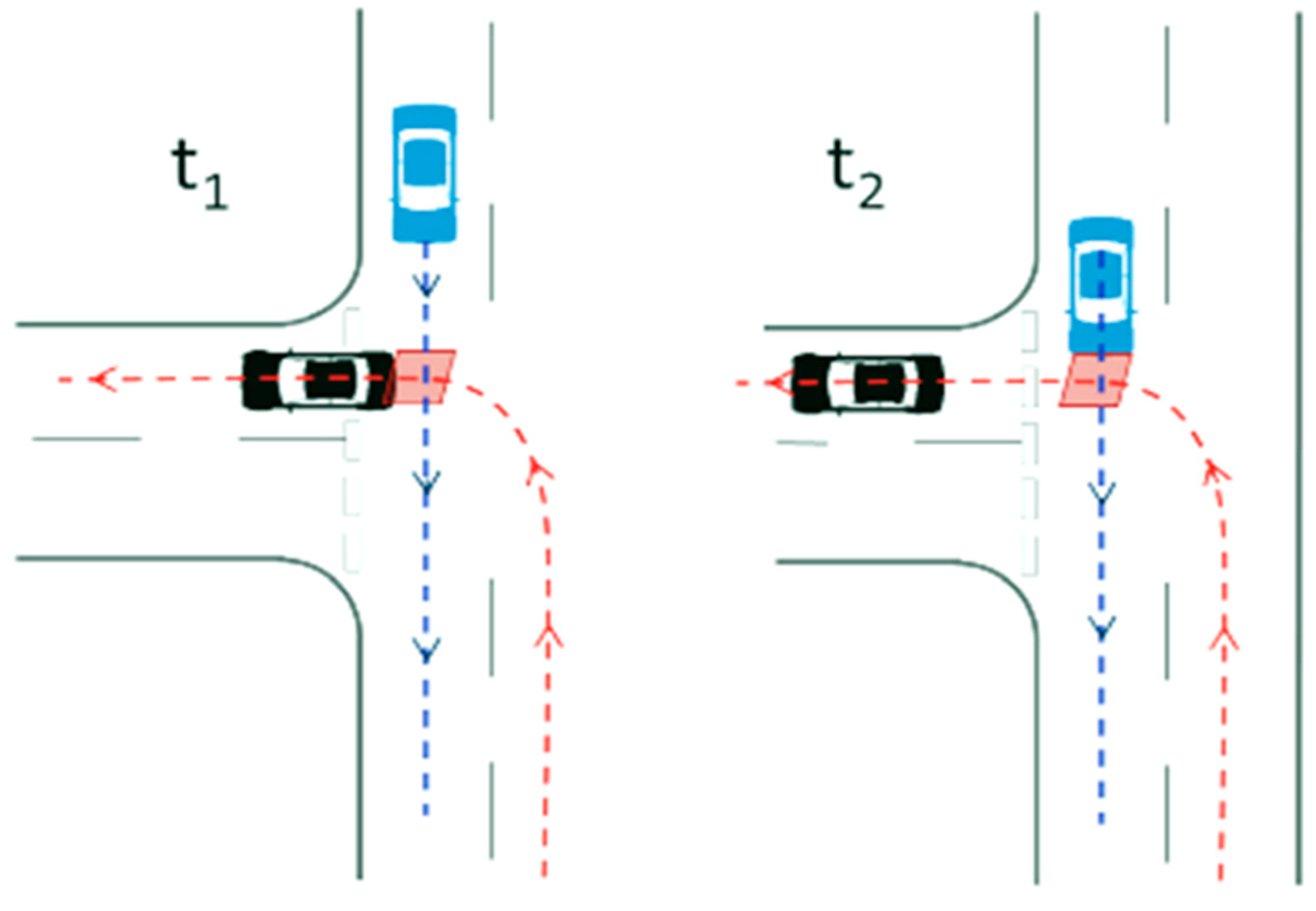
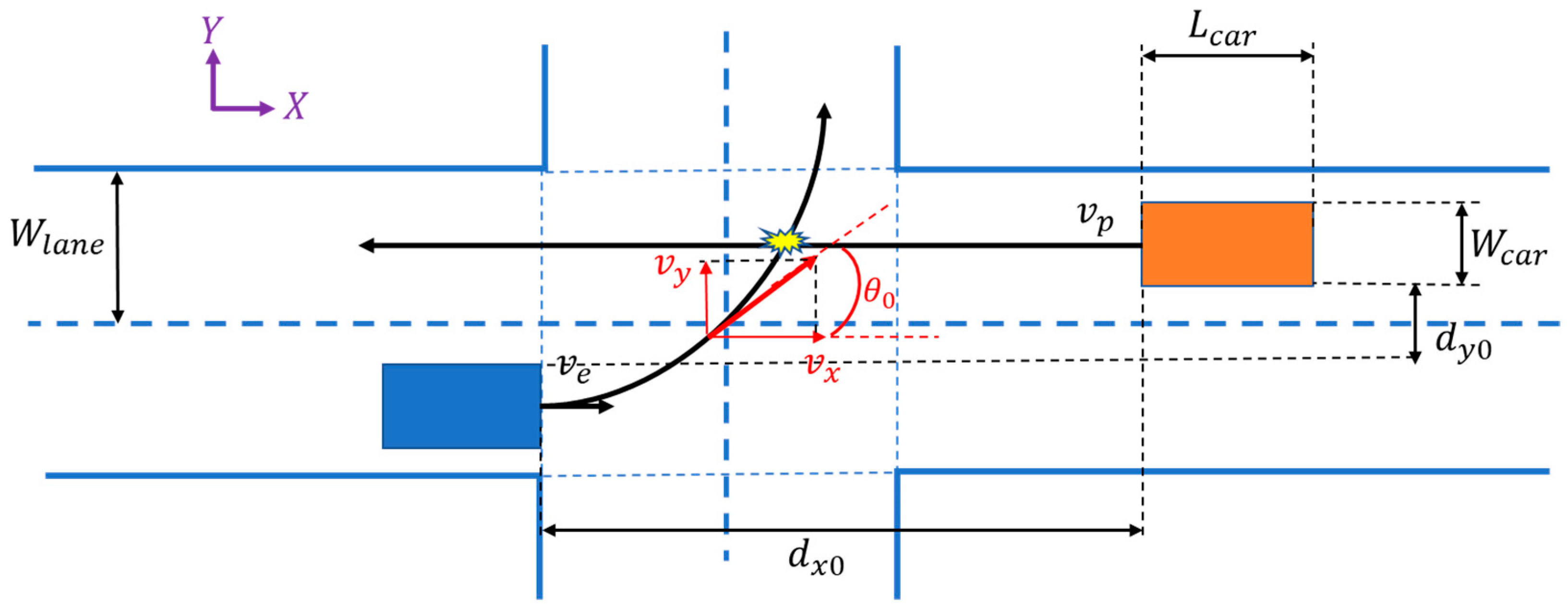
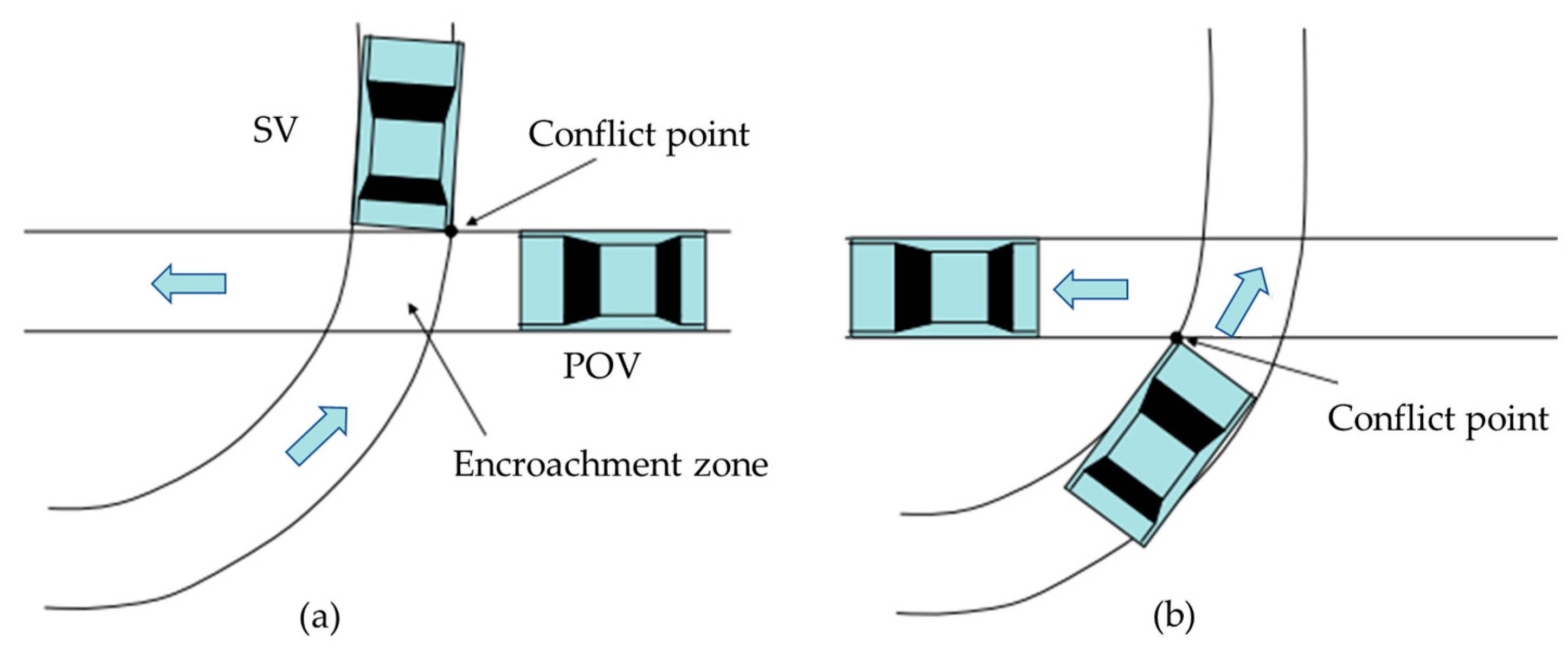
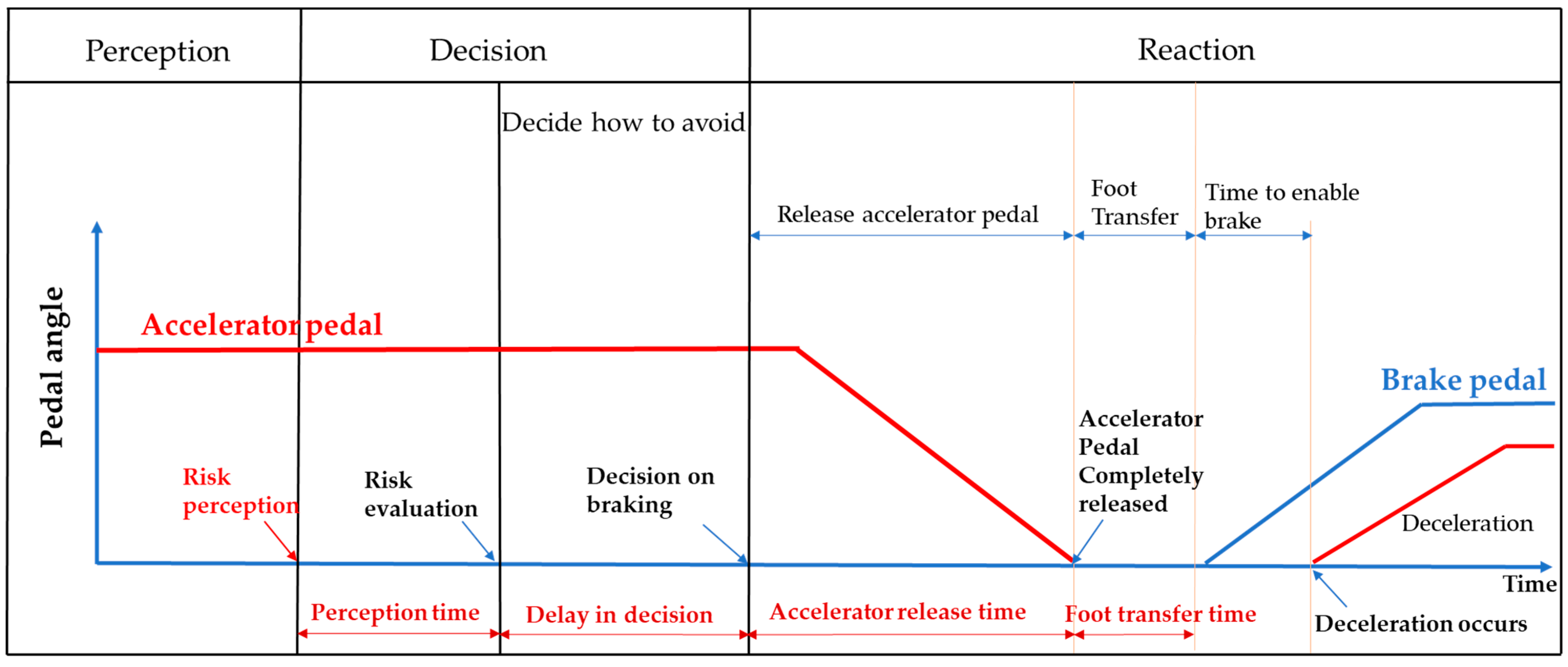

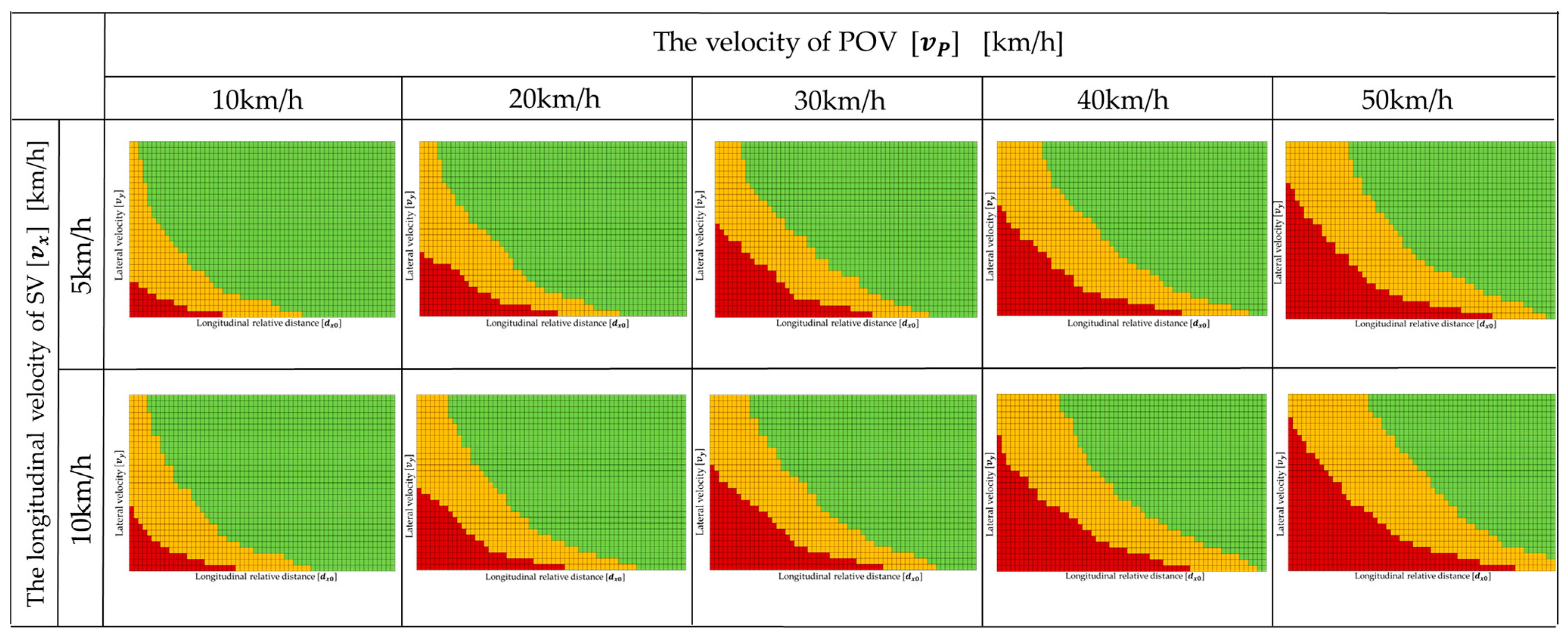
| Name of the Parameter | Specification of the Parameter |
|---|---|
| Length/width/height (mm) | 4556 ∗ 1855 ∗ 1719 |
| Wheelbase (mm) | 2700 |
| Curb Weight (kg) | 1690 |
| Maximum Torque (Nm) | 250 |
| Maximum Power (Kw) | 124 |
| Steering System | Electric Power Steering (EPS) |
| Suspension System | Front: McPherson Independent Suspension |
| Rear: Multi-link Beam Independent Suspension |
| Uncomfortable | Comfortable | ||||||||
|---|---|---|---|---|---|---|---|---|---|
| 1 | 2 | 3 | 4 | 5 | 6 | 7 | 8 | 9 | 10 |
Disclaimer/Publisher’s Note: The statements, opinions and data contained in all publications are solely those of the individual author(s) and contributor(s) and not of MDPI and/or the editor(s). MDPI and/or the editor(s) disclaim responsibility for any injury to people or property resulting from any ideas, methods, instructions or products referred to in the content. |
© 2023 by the authors. Licensee MDPI, Basel, Switzerland. This article is an open access article distributed under the terms and conditions of the Creative Commons Attribution (CC BY) license (https://creativecommons.org/licenses/by/4.0/).
Share and Cite
Ren, X.; Zhang, H.; Wang, X.; Zhang, W.; Yu, W. Quantification and Pictorial Expression of Driving Status Domain Boundaries for Autonomous Vehicles in LTAP/OD Scenarios. World Electr. Veh. J. 2023, 14, 187. https://doi.org/10.3390/wevj14070187
Ren X, Zhang H, Wang X, Zhang W, Yu W. Quantification and Pictorial Expression of Driving Status Domain Boundaries for Autonomous Vehicles in LTAP/OD Scenarios. World Electric Vehicle Journal. 2023; 14(7):187. https://doi.org/10.3390/wevj14070187
Chicago/Turabian StyleRen, Xuan, Huanhuan Zhang, Xiaolan Wang, Weiwei Zhang, and Wangpengfei Yu. 2023. "Quantification and Pictorial Expression of Driving Status Domain Boundaries for Autonomous Vehicles in LTAP/OD Scenarios" World Electric Vehicle Journal 14, no. 7: 187. https://doi.org/10.3390/wevj14070187
APA StyleRen, X., Zhang, H., Wang, X., Zhang, W., & Yu, W. (2023). Quantification and Pictorial Expression of Driving Status Domain Boundaries for Autonomous Vehicles in LTAP/OD Scenarios. World Electric Vehicle Journal, 14(7), 187. https://doi.org/10.3390/wevj14070187





